All about sugar beet and its cultivation
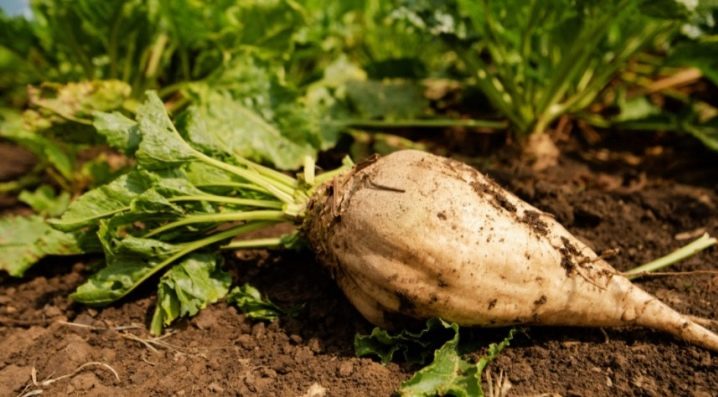
Sugar beet got its name for a reason. This root vegetable has a high content of such a substance as sucrose. This plant has a high productivity, it is used not only to obtain sugar, but also given to animals as feed.
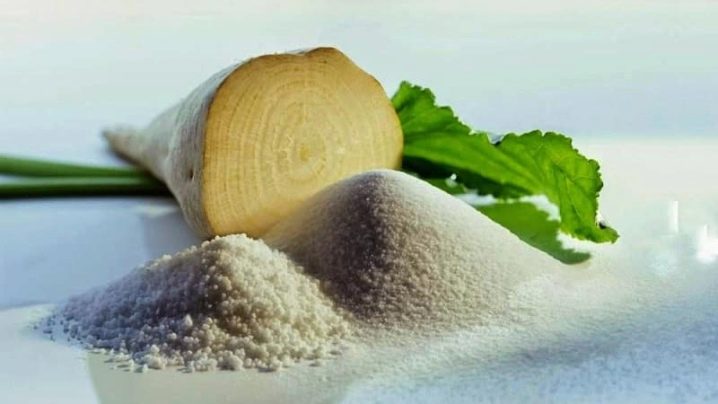
Description
Sugar beets look unusual, they are white, not the usual purple. There are varieties and hybrids in the family, they all have the same characteristics.
This culture has a biological feature, it is a plant with a two-year development. It has more developmental phases, in the first period, which extends over a year, the formation of a root crop and a root part is observed.
The culture in question loves fertilized soil, warmth and plenty of light. It needs to be watered regularly for a decent harvest.
The sugar content in sugar beets is more than 16%, if we consider the ratio to the mass of dry matter, then this is from 69 to 72%. This root vegetable also contains a large amount of vitamins of different groups, micro- and macroelements.
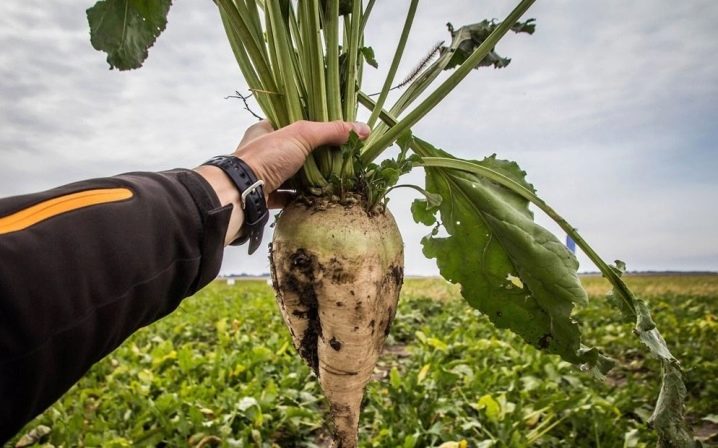
History of appearance
Back in 1747, a chemist from Germany, Andreas Marggraf, found that the described vegetable contains sugar. Previously, reed was the main crop from which it was made. Despite this discovery, his assistant was able to apply this knowledge only after 10 years. In 1801, the first factory was built, which specialized in the production of sugar from this root crop. Iran is considered the homeland of the described culture.
Popular varieties
Any type of plant described has a white flesh. They differ among themselves in sugar content. To date, botanists have identified three main types, among them fruitful, fruitful-sugary and sugary. The first has a sugar content of 17.9-18.3%. The second has from 8.5 to 18.7%, but it stands out for its high yield. The maximum amount of this substance is contained in the sugary group, where the indicator ranges from 18.7 to 19%. However, in the third case, it will not be possible to achieve high yields.
If an enterprise sows sugar beet from 150 hectares, then it is recommended to use the following types of hybrids for sowing:
-
Z / NZ - characterized by early maturation of root crops;
-
Z / NZ / N - option for long-term storage;
-
NE - yields root crops later than other species.
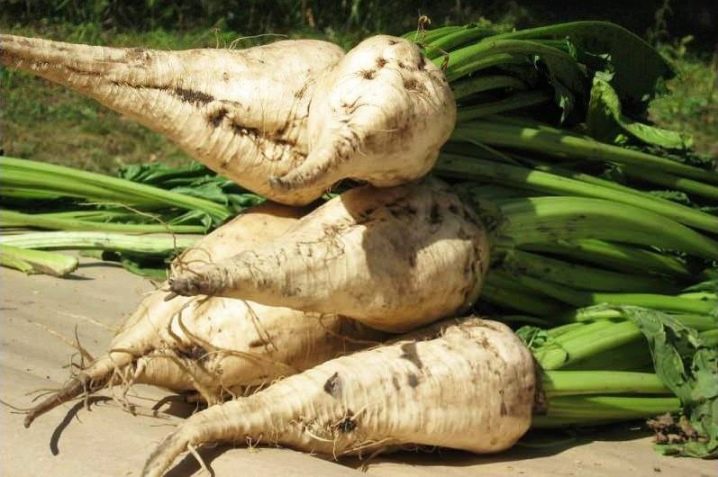
For sowing sugar beets in large volumes, it is worth choosing those varieties that have been bred by experienced breeders. Today these include the following:
-
"Belarusian single-seeded 69";
-
"Nesvizhsky 2".
Their main advantage is their high yield, which is about 40-45 t / ha.
The following varieties are very popular among those enterprises that have mastered the intensive cultivation technology:
-
"Beldan";
-
"Kavebel";
-
Danibel;
-
"Manezh".
For harvesting root crops of an early harvest, varieties such as are usually used:
-
"Ruby";
-
"Cassandra";
-
Vegas.
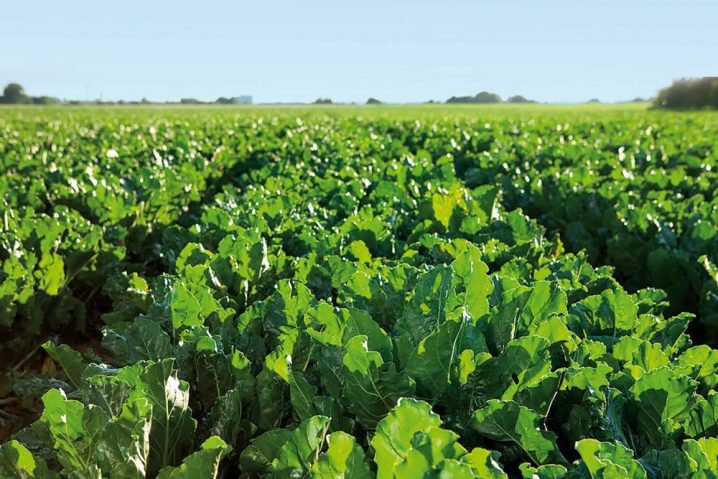
Growing seedlings
To grow quality seedlings, you will first need to pay attention to the seed. An ideal solution would be a coated version with a size of 3.75-4.75 mm. It is imperative that such seeds contain not only insecticidal but also fungicidal disinfectants.
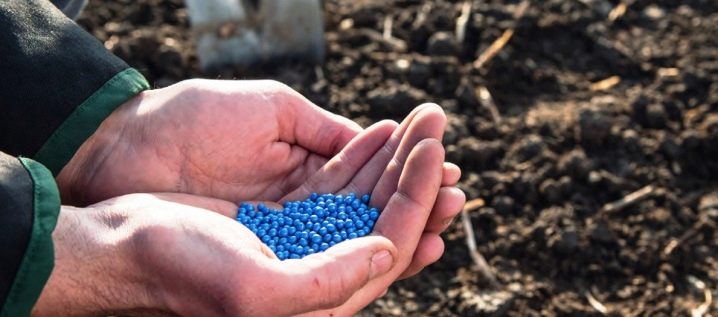
Preparation
When preparing seed material, it is worth following the following scheme.
-
In order for the seeds to retain their qualities during sowing, they are cleaned of dirt.
-
Then the material is sanded and distributed in accordance with the dimensions. Seeds 3.5-4.5 mm in size are laid on one side, 4.5-5.5 on the other.
-
Pellet coating will be required before sowing. For the procedure, you can use a mixture consisting of 2 kilograms of humus and 300 grams of molasses. All this is diluted in 0.7 liters of liquid (water).
-
The next step is to immerse the seed in water for a while. Its temperature should be between 18 and 25 degrees.
If sugar beets are sown in large volumes in the fields, then special equipment is responsible for this procedure. For private plantings, pre-prepared seeds are sold in garden stores.

Landing
Correctly prepared seeds are planted in deep boxes, one seed at a distance of 3-5 cm. Then the soil is watered. It is best to cover the container on top with foil to speed up the process of emergence of the first shoots.
The containers are removed on a sunny windowsill and the moisture content of the soil is strictly monitored. It is necessary to moisten it with a spray bottle. When the first leaves appear on the surface, the film is removed. Seedlings dive at the stage of formation of 3-4 true sheets.
You can pinch the root a little to increase the size of the root crop.
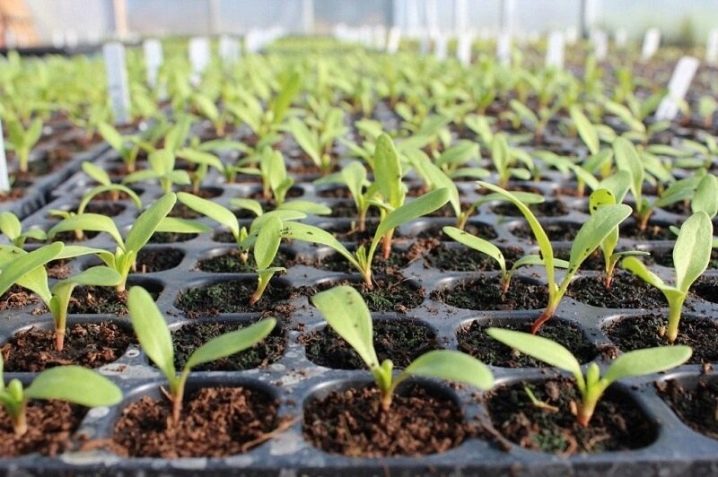
Landing
Sugar beets have specific requirements for heat and crop rotation. The best predecessors for her are winter cereals. Sowing this crop after corn, rapeseed, legumes and flax is not recommended. And also, you should not sow sugar beets after cereals, if herbicides were previously used, which contained chlorsulfuron or metsulfuron-methyl.
You can also use previously proven crop rotation schemes, when sugar beets are planted on an area where previously there were grain peas, then winter crops, and then only beets are sown. And also clover of the first year is suitable, then winter crops and only after them beets.
If it is required to return the culture to its former place of growth, then this can be done no earlier than in three years. Failure to comply with this rule will lead to the defeat of sugar beets not only by insects, but also by diseases.
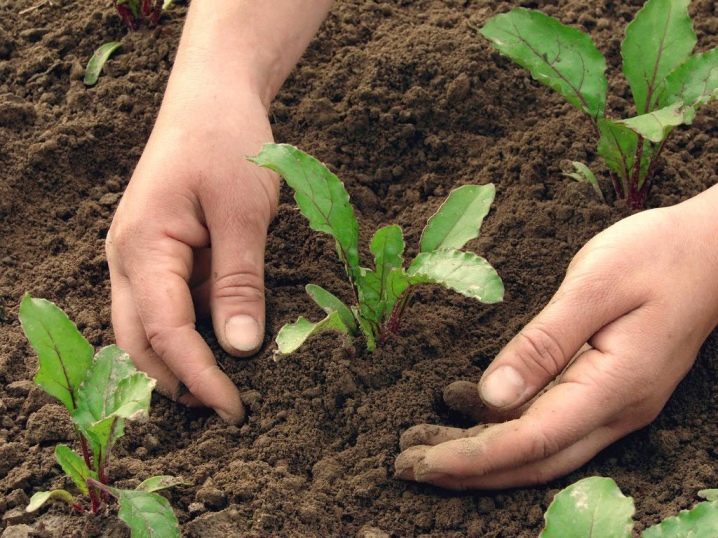
Experienced agronomists know that the quality and quantity of the crop largely depends on the soil in the area chosen for planting. This culture prefers cultivated soils:
-
sod;
-
sod-carbonate;
-
sod-podzolic.
It is allowed to use loam or sandy loam soil if:
-
it retains moisture well;
-
pH is 6-6.5;
-
it is well aerated.
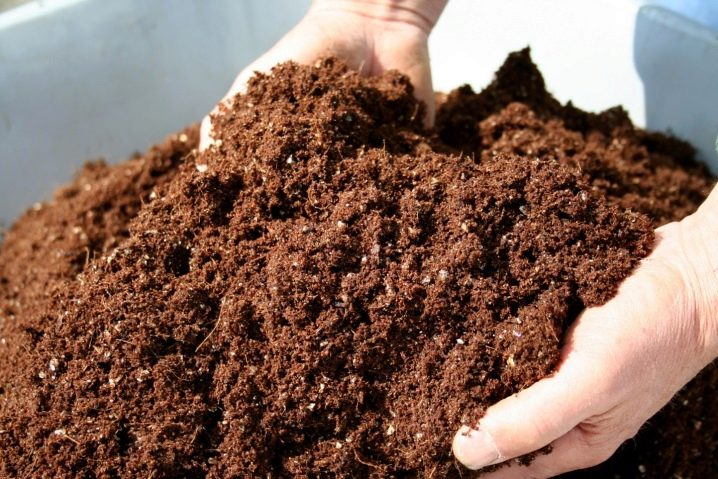
Sugar beet has high requirements for the content of certain elements in the soil. For example, elements such as phosphorus and potassium, per kilogram of earth should be from 150 mg, boron - from 0.7 mg. The area should contain about 1.8% humus.
The following types of soil are completely unsuitable for growing the described culture:
-
peat;
-
waterlogged;
-
lungs;
-
too heavy.
A warm day without precipitation is suitable for planting. A prerequisite is the heating of the soil to a temperature of + 5-6 degrees. The ambient temperature must be at least +8 degrees. Sowing is carried out in a short time, after a short period of time after soil preparation.
The sowing unit rate depends on the soil and climatic conditions in the region where the sugar beet is planted. Usually this figure ranges from 1.2 to 1.3.
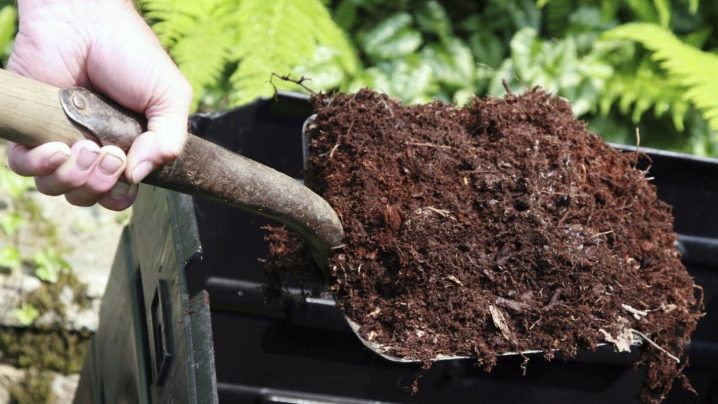
The depth at which the seed is placed depends largely on the type of soil:
-
sandy loam and light loam - planting depth is 30-35 mm;
-
medium loam - 25-30 mm;
-
heavy soil - 20-25 mm.
For a convenient approach of equipment and subsequent mechanized maintenance, it is required to observe the row spacing. Between the main beds, this parameter is 450 mm, and the butt ones - no more than 500 mm.
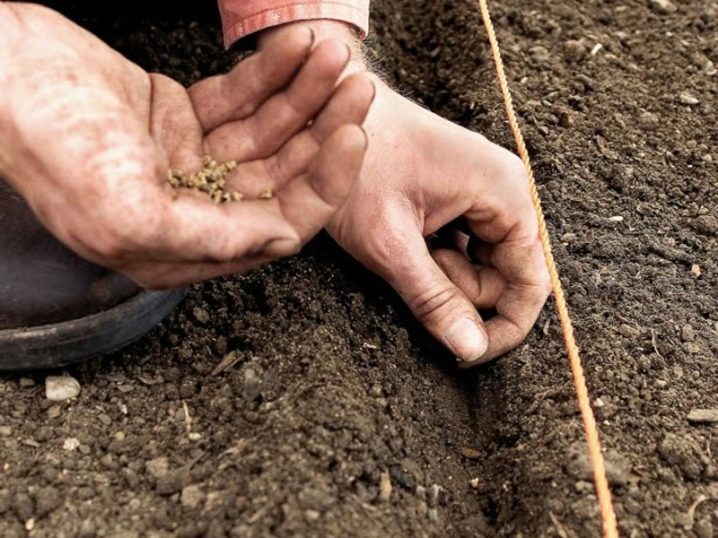
Care
4 days after the sowing, it is necessary to do the harrowing of the soil. It is especially important if precipitation fell the day before.Harrowing allows you to remove the crust on the soil surface, remove weeds and increase soil moisture.
When the first shoots appear on the surface, and the first true leaves grow, the procedure is repeated. It is not recommended to do the harrowing immediately after the seeds have sprouted, as in this case they can be easily damaged.
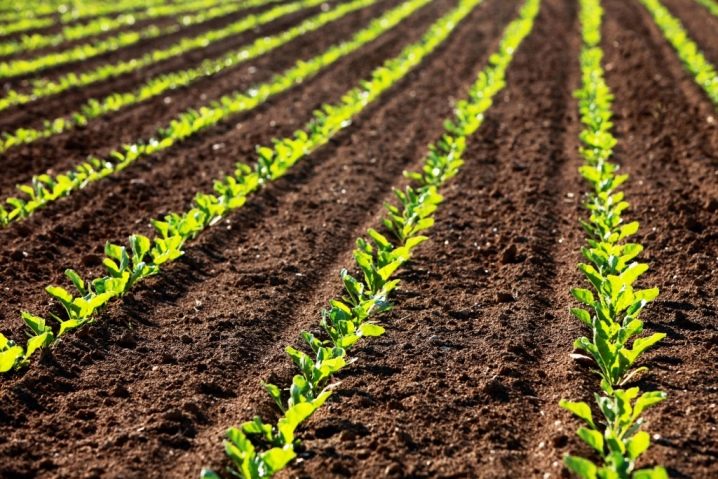
Further, work is carried out to thin out the rows of sugar beets. Only strong plants are left. The first procedure is carried out by mechanical means, then only manually.
To achieve a large yield of sugar beets, it will be necessary to create appropriate conditions for the development of the root crop. The cultivation technology of this culture is simple, you just need to study each stage in more detail.
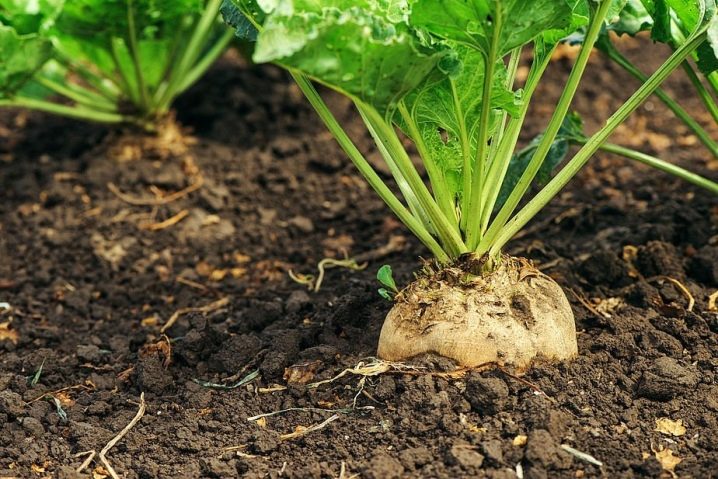
Watering
It is very important to provide abundant watering to sugar beets in different growing seasons. Usually, drip irrigation systems are used for this, which allow timely and in the required amount to introduce moisture into the soil, preventing it from overmoistening. Since mid-summer, sugar beets require 4 waterings per month, but this is provided that there is little rainfall. In early fall, only one watering is required, shortly before the planned harvest.

Top dressing
Competent feeding of sugar beets allows you to grow large root crops. They use organics and mineral complexes.
Organic
This type of fertilizer is applied in the fall, when the plot is plowed, or under the previous crop. For one hectare, the calculation of the organic mixture is from 40 to 80 tons. It is strictly forbidden to use manure that has not yet decomposed before planting. Such fertilization will provoke the appearance of scab and rot on root crops. As an alternative, small grain straw or green manure is used - white mustard, lupine.
It is very important to use straw correctly as a top dressing. So, if it is used as the only fertilizer, then nitrogen is additionally introduced into the soil. One ton of straw requires from 8 to 10 kg of this substance, per hectare.
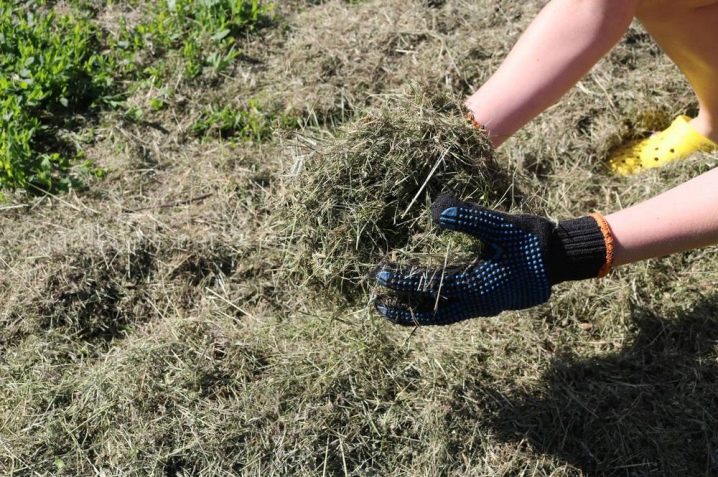
Mineral complexes
As a phosphorus fertilizer for sugar beets, superphosphate is used, necessarily granular and ammoniated. The required amount of potassium is provided by sylvinite and potassium salt. Urea and ammonium sulfate help to replenish nitrogen in the soil.
Boron is very important for sugar beet, but there is a small amount of it in the soil, unable to meet the needs of plants. In this case, borax or boric acid is used.
Nitrogen is equally important, but you cannot overdo it with it, since it affects the amount of nitrates in root crops.
In that case, when the area for sowing sugar beet has a pH below 6, liming is carried out. It is possible directly under the beets in the fall, or better under the previous crop. For this case, defecate or dolomite flour is used.
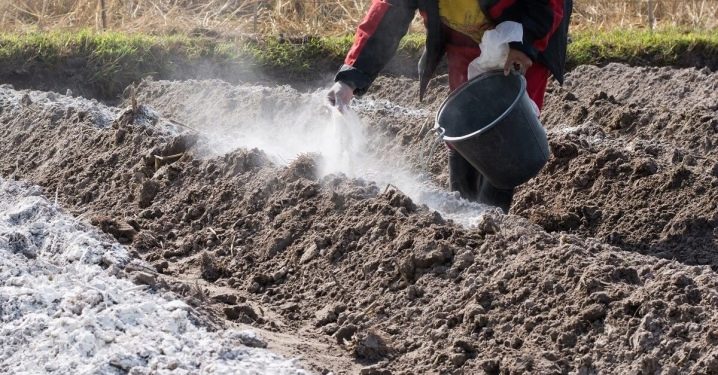
Diseases and pests
With a high-quality plant protection system, it is possible to achieve a good harvest of sugar beets. Since weeds often contribute to the spread of diseases, they are removed with special herbicides.
Among the most common problems:
-
root-eater;
-
cercosporosis;
-
pulp;
-
scab;
-
phomosis.
There are several methods of dealing with such problems, including biological and chemical ones. In the first case, it is important to deep plow the area for sugar beets, remove weeds, and attract ladybirds to plantings, which are natural enemies of some pests.
Of the chemical means of protection, insecticides, fungicides and pesticides are usually used.
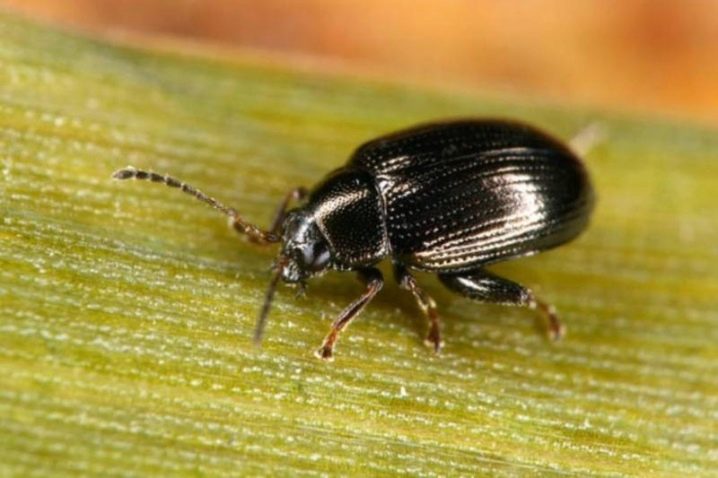
Collection and storage
A few days before the intended harvest, abundant watering of sugar beets is made. On an industrial scale, mechanized means are used for harvesting.
After the roots are collected, their subsequent drying and cleaning of the soil remaining on the surface will be required.The sugar beet is stored at a temperature of 0 ... 2 degrees. With an increase in this indicator, the level of sugar content in root crops decreases.
In the case when it is not possible to regulate the moisture level in the warehouse, the crop is wrapped in parchment paper and sprinkled with sawdust. Sugar beet tops serve as a good fertilizer for the next season. With a yield of 400-500 centners per hectare, it will be able to replace from 25 to 30 tons of manure.
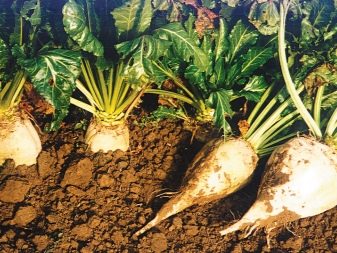
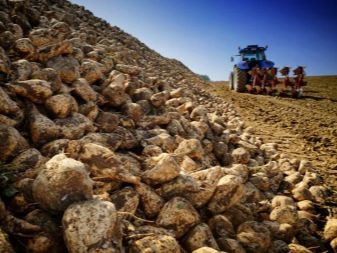











The comment was sent successfully.